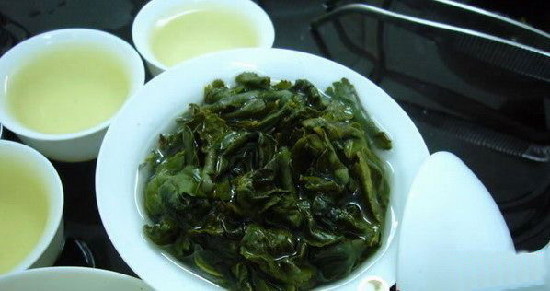红茶 translates from Chinese as red tea, because the liquid is of the color of amber due to fermentation, but is known as black tea in the West. The best-known brand of 红茶 is Qimen black tea, named after its origins in Qimen in Anhui Province. It’s believed that the fermentation process produces certain compounds beneficial to the stomach.
乌龙茶 is a semi-fermented tea native to China. Studies show that it helps the human body burn fat, and so is favored by those trying to lose weight. But excessive consumption can cause gastric problems.
One type of Oolong is 铁观音 (tiě guān yīn), appreciated for its lingering 回味 (huí wèi), aftertaste. It is said that the best-grade Tieguanyin retains its flavor even after seven refills. It is hence often compared with a sublime musical performance, where the audience is left with the impression that music still fills the air long after the last note has been played.
 |
|
Now let’s talk about 普洱 (pǔ ěr), a tea originating in southwestern China and also grown in Laos, Myanmar and Vietnam that was transported along the ancient Tea Horse Trail. It is of the post-fermented type whose hallmarks include a dark shade and distinctive flavor. After being plucked from the tree, tea leaves are sun-baked, twisted, compressed into bricks and piled up to encourage beneficial ageing through exposure to the air. This process enabled preservation and convenient transportation over the long journeys its trade entailed in ancient times. According to Traditional Chinese Medicine, Pu’er has a warm, mild essence that nourishes Yang energy in the human body, hence the proverb Longjing in summer, Pu’er in winter.
